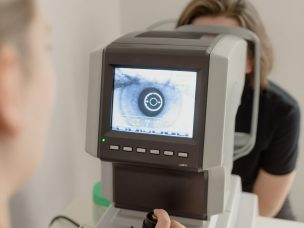Age-related macular degeneration (AMD) is the most common cause of irreversible vision loss in the United States. As the population grows older, so does the increase in cases of age-related eye disease. Over 28 million American adults suffer from one or more eye-related diseases. Several populations are at a higher risk of developing these conditions.
The Department of Ophthalmology at the University of Michigan and the Ophthalmology Department at the University of Pittsburg examined which populations in the United States are at the highest risk of developing an age-related eye disease, such as AMD. They also explored what barriers exist for eye care services in these high-risk populations.
Data reviewed included the Salisbury Eye Evaluation Study, two Baltimore Eye Studies, and The National Long Term Care Survey. All studies included adult patients with chronic eye diseases, including age-related macular degeneration, cataracts, diabetic retinopathy, primary open-angle glaucoma, and refractive error.
The data revealed that smokers were at the highest risk of developing AMD. Caucasians also possessed a disproportionately higher risk of developing AMD. It was also determined that cardiovascular risk factors, including abdominal obesity and increased total serum cholesterol, may also contribute to the development and progression of AMD.
Despite Caucasians being more likely to develop AMD, some disparities exist for non-white populations that increase the burden of disease. For example, Blacks and Hispanics are less likely to seek regular vision screenings and receive treatment for eye disease. In addition, those with limited health literacy and low socioeconomic status are also at a higher risk of age-related vision loss.
From these data, we can conclude that high-risk populations are at greater risk of suffering from age-related vision loss. These populations are also more likely to delay and discontinue treatment due to socioeconomic barriers and low health literacy. A lack of rapport between patient and physician is also a barrier to eye care. A call to action is made for eye specialists to improve communication and trust with patients to improve patient outcomes [1].
Source:
[1] Elam, A.R., & Lee, P.P. (2013). High-Risk Populations for Vision Loss and Eye Care Underutilization: A Review of the Literature and Ideas on Moving Forward. Survey of Ophthalmology, 58(4), 348–358. https://doi.org/10.1016/j.survophthal.2012.07.005










